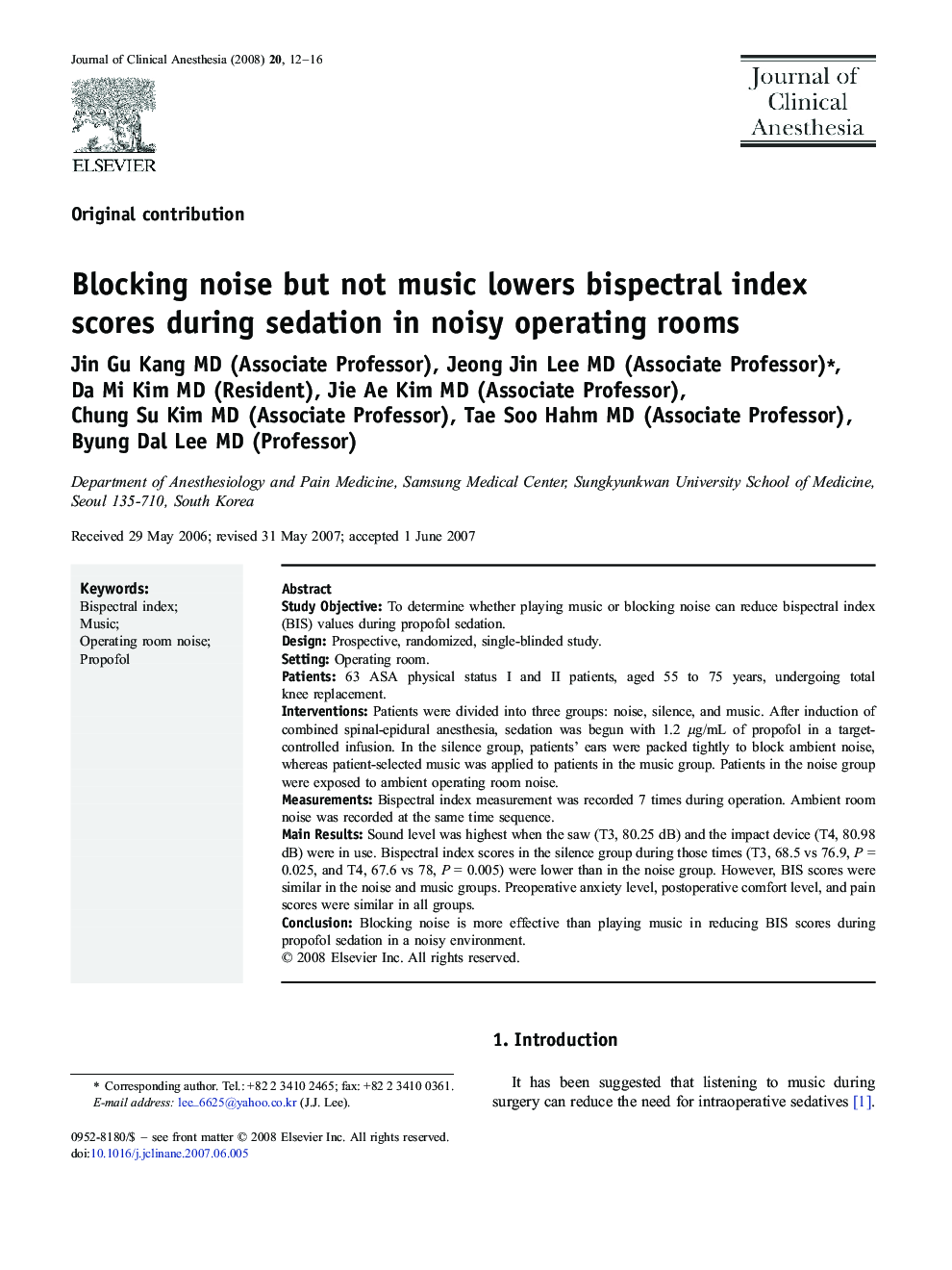| Article ID | Journal | Published Year | Pages | File Type |
|---|---|---|---|---|
| 2763627 | Journal of Clinical Anesthesia | 2008 | 5 Pages |
Study ObjectiveTo determine whether playing music or blocking noise can reduce bispectral index (BIS) values during propofol sedation.DesignProspective, randomized, single-blinded study.SettingOperating room.Patients63 ASA physical status I and II patients, aged 55 to 75 years, undergoing total knee replacement.InterventionsPatients were divided into three groups: noise, silence, and music. After induction of combined spinal-epidural anesthesia, sedation was begun with 1.2 μg/mL of propofol in a target-controlled infusion. In the silence group, patients' ears were packed tightly to block ambient noise, whereas patient-selected music was applied to patients in the music group. Patients in the noise group were exposed to ambient operating room noise.MeasurementsBispectral index measurement was recorded 7 times during operation. Ambient room noise was recorded at the same time sequence.Main ResultsSound level was highest when the saw (T3, 80.25 dB) and the impact device (T4, 80.98 dB) were in use. Bispectral index scores in the silence group during those times (T3, 68.5 vs 76.9, P = 0.025, and T4, 67.6 vs 78, P = 0.005) were lower than in the noise group. However, BIS scores were similar in the noise and music groups. Preoperative anxiety level, postoperative comfort level, and pain scores were similar in all groups.ConclusionBlocking noise is more effective than playing music in reducing BIS scores during propofol sedation in a noisy environment.
